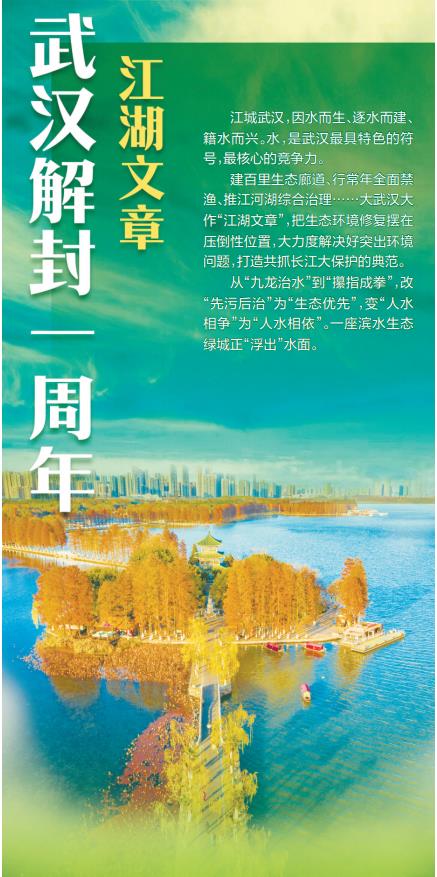
Jiangcheng Wuhan is born of water, built by water and prospered by water.
Water is the most distinctive symbol and core competitiveness of Wuhan.
"The lonely sail is far away and the blue sky is exhausted, only the Yangtze River flows in the sky", "There are six miles of smoke and waves around, and several teams of cold gulls are hundreds of chicks", "every tree in Hanyang becomes clear in the water, and Parrot Island is a nest of sweet grasses" … For thousands of years, literati and poets have written down masterpieces here, and the great beauty in the poem is Wuhan, with water as the root and water as the soul.
Build a hundred-mile ecological corridor, ban fishing all the year round, and promote the comprehensive management of rivers and lakes … The great Wuhan masterpiece "Jianghu Articles" puts ecological environment restoration in an overwhelming position, vigorously solves outstanding environmental problems, and creates a model for jointly protecting the Yangtze River.
From "controlling water in Jiulong" to "grasping fingers into fists", we changed "pollution first and then treatment" to "ecological priority" and changed "competition between people and water" to "people and water depend on each other". A waterfront ecological green city is "emerging" from the water.
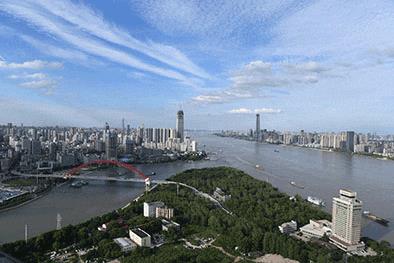
Three towns in Wuhan where the two rivers meet (photo taken on August 14, 2020). Xinhua News Agency reporter Cheng Minshe
Born of water
"This Panlongcheng is the Wuhan Municipal Government thousands of years ago." In Panlongcheng National Archaeological Site Park, Mr. Qi vividly explained Wuhan’s "urban roots" to his 9-year-old son.
Looking up in the drizzle, the ruins of Miyagi in Panlongcheng are faintly discernible. The surviving city walls and the base address are wordlessly narrating the vicissitudes of life, which reminds people of the glory and prosperity of this ancient city.
Located on the north bank of Fuhe River, the site of Panlongcheng, surrounded by water on three sides, is a pre-Shang city site with the clearest known layout and the richest relics in the Yangtze River valley, with a history of 3,500 years.
In those days, Panlongcheng was the thoroughfare of nine provinces. According to Zhang Changping, the archaeological excavation leader of Panlongcheng site and a professor at Wuhan University, Panlongcheng is surrounded by the Yangtze River, the Han River and a network of rivers and lakes extending in all directions. Its geographical location is convenient for connecting the Central Plains and radiating from all directions. In its heyday, Panlongcheng should control the middle reaches of the Yangtze River or even wider areas.
The appearance of cities in the core area of Wuhan began in the late Eastern Han Dynasty. At that time, Wuhan was in the form of "two houses looking at each other". Jiangbei has been called Quyang County, Zhuanyang County, Hanjin County and Hanyang County, and Jiangnan has been called runan county County and Jiangxia County. From the Han Dynasty to the Yuan and Ming Dynasties, Wuhan became a land and water transportation hub, and merchants converged.
According to the relevant person in charge of Wuhan Local Records Office, during Chenghua period of Ming Dynasty, the main road of Hanjiang River, which entered the river from Hanyang GuiShan Zhinan, was changed from the north of the mountain to the river, thus forming Hankou New Town, which laid the geographical foundation for the three towns in Wuhan. At the end of Ming Dynasty and the beginning of Qing Dynasty, Hankou, a commercial town in Central China, Li Zhuo, was also called "the four famous towns in the world" with Beijing, Suzhou and Florida, and was also called "the first prosperous place in Chu" with Zhuxian Town, Jingdezhen and Foshan Town.
In the late Qing Dynasty, Zhang Zhidong, Governor of Huguang, promoted the New Deal, established industry and built railways here, making Wuhan one of the birthplaces of modern industry in China. After the opening of Hankou, the development of Wuhan wharf entered the "great river economy era", and Wuhan became a commercial port in the middle reaches of the Yangtze River, enjoying the reputation of "Oriental Chicago".
Water continues to nourish the city. Statistics show that the water area in Wuhan is 2117.6 square kilometers, accounting for nearly a quarter of the national territory. The Yangtze River and Hanjiang River pass through the city, and there are 166 lakes listed in the protection list, and 165 rivers with a length of more than 5 kilometers. Wuhan is a city floating on the water, and its development is closely related to water.
Rich water resources endowments continue to shape Wuhan’s urban form, urban life and urban industry. Turning to the map of Wuhan, water-related place names pop up on the paper: Fruit Lake, Sanyan Bridge, Zhuodaoquan, Wutai Gate … The ancient Yunmeng osawa is now a tall building, and now almost all places with the words "lake" and "bridge" have been in the water.
For thousands of years, Wuhan people have also formed the same quality as water.
"This land of abundant water has given Wuhan people a flexible attitude towards life and an open mind." Li Wan, winner of the Yellow Crane Culture Award, said that although the water is soft, it is also strong when it is strong. This is vividly reflected in Wuhan people’s "disobedience to the week" character. In the history, "although Chu has three households, Qin will be defeated" is enough to prove this point. Continued to modern times, Wuchang took the first shot of the Revolution of 1911, and the "spirit of taking the lead in the world" was firmly rooted in the beliefs of Wuhan people.
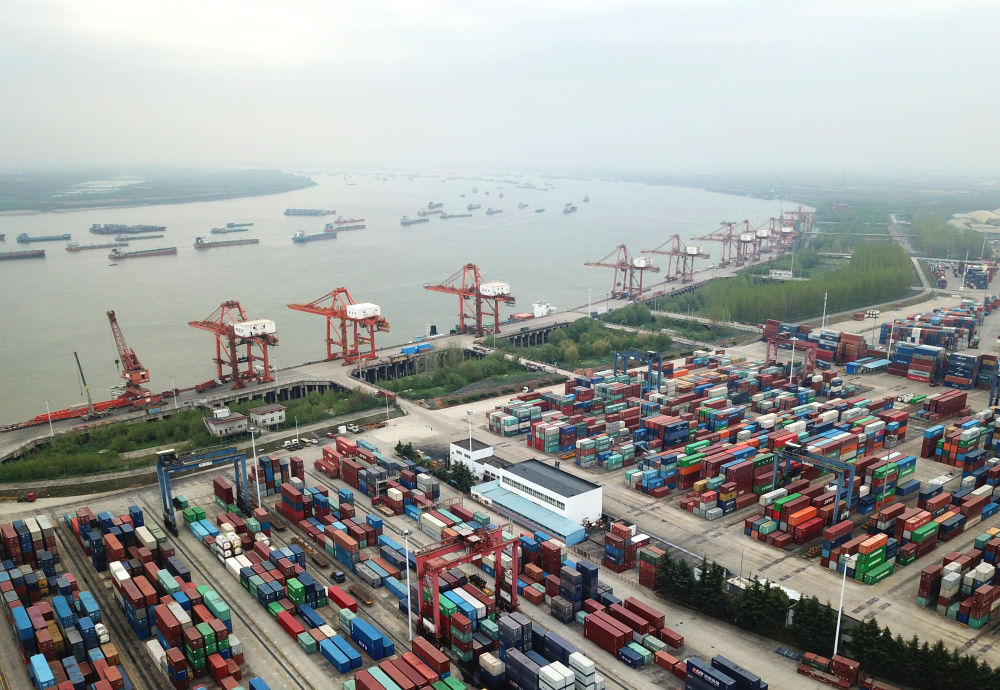
Busy Wuhan Yangluo Port (photo taken on March 29th). Xinhua News Agency reporter Cheng Minshe
Remodeling coastline
"Dang, dang, dang." In Hankou River Beach, rickshaw bells jingle. Children selling newspapers, vendors shouting hard, gentlemen carrying suitcases and wearing hats, cheongsam ladies rushing on … The retro style makes people feel that they have traveled back a hundred years in an instant.
This is the performance scene of the drifting multi-dimensional experience drama "Zhiyin Hao", which is based on the Yangtze River culture and is based on Wuhan in the 1920s and 1930s. Different from the traditional drama expression, Zhiyin Hao does not divide the audience area and the performance area. After the tourists board Zhiyin Hao, they become part of the performance, so they can truly experience the Wuhan customs a hundred years ago in the "crossing".
The unique urban pattern of "two rivers and four banks" has created this natural "dock" in Wuhan. In the poetry of Wuhan, "Eight Wharfs on the Twenty-mile Long Street" and "Ten Miles Sailing in Accordance with the City, All Houses are Brightly Lights", the poet either "Farewell" or "Xiao Bo", and people, logistics and information flow gather and distribute at the Wharf, "coming like clouds, leaving like flowing water", which has created the development and prosperity of the city.
"The docks are more prosperous, but the messy layout affects the city appearance and is dangerous during the flood season." At the age of 68, Mr. Zhou, who lives in Hanzheng Street, told reporters that from Wuhan Pass to Jijiazui, there used to be dozens of docks where people came and went, loading and unloading goods and maintaining equipment almost around the clock. During the catastrophic flood in 1998, more than 1,000 households, dozens of enterprises and many docks in Nan ‘anzui, where the Yangtze River and the Han River meet, were flooded, resulting in great losses.
Liu Ziqing, deputy mayor of Wuhan, said that historically, the old docks of "two rivers and four banks" made important contributions to Wuhan’s economic and social development. However, with the development of the city, the existence of these docks not only erodes valuable shoreline resources, affects the urban riverside landscape, hinders the construction of the Yangtze River Economic Belt and the Yangtze River New City, but also causes serious damage to the ecological environment and ecological security of the Yangtze River.
Since 2016, Wuhan has carried out comprehensive improvement of resources and environment of ports along the Yangtze River in the city, and 103 ports and docks and 189 barges in the core areas of Wuhan Yangtze River and Hanjiang River have been included in the improvement scope. After the optimization and adjustment, the number of wharves in the core areas of the Yangtze River and Hanjiang River in Wuhan decreased by 61.2%, and the number of barges decreased by 63.5%, leaving the coastline of the two rivers for hundreds of kilometers.
On the banks of the Yangtze River and Hanjiang River, where Teng withdrew, flood control and comprehensive environmental improvement work started rapidly, and the construction of Wuhan Baili Yangtze River Ecological Corridor was in full swing. The reporter saw in the Qingshan River Beach near the Erqi Yangtze River Bridge that the once messy beach is now an urban greenway, with many green landscapes dotted in it. On the beach squares with different elevations built according to different water levels, people are either relaxing or strolling, which is very comfortable.
Jin Jinhua, the person in charge of the river embankment department of Wuhan Water Affairs Bureau, said that the high-standard planning and construction of Wuhan Baili Yangtze River Ecological Corridor is to form a friendly relationship between nature, cities and people, so that ordinary people can gain real happiness. According to different planning and positioning, Hankou River Beach, Wuchang River Beach, Hanyang River Beach, Qingshan River Beach and Hanjiang River Beach are constantly expanding, and the ecological waterfront space and "slow life system" born by the river are growing inch by inch in the "two rivers and four banks".
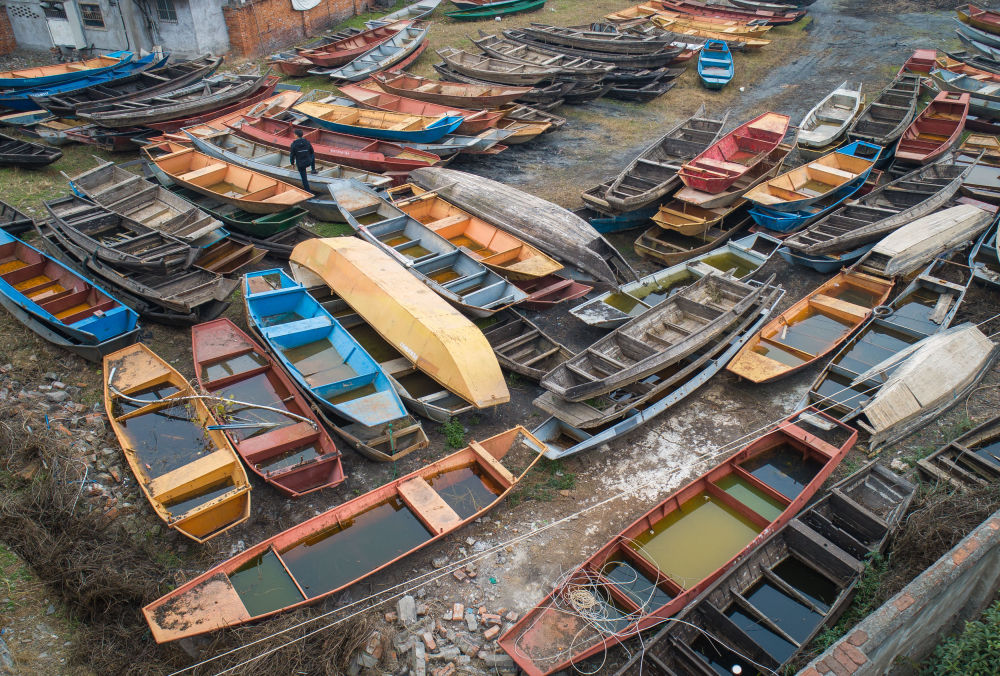
A "ashore" fishing boat stacking point in Baishuigang Village, Zhicheng Town, Yidu City (photo taken on January 2, 2020). Xinhua News Agency reporter Xiao Yijiu photo
Return of finless porpoise
"A big table of radish and cabbage is better than a fishbone." This is a folk saying circulating in Wuhan. What is said is that in Wuhan, all things are impossible without fish.
The two rivers meet here, and lakes are dotted around. The wide water area and suitable climate provide a unique environment for the growth and reproduction of fish. Eating by water, fish, is also a frequent visitor to the public table.
Liu Guoliang, president of Wuhan Catering Association, told reporters that people in Wuhan eat fish all the time, and they are eating in different ways. In addition to herring, grass carp, silver carp and bighead carp, Wuhan people also like to eat crucian carp, culter ilishaeformis, Pseudobagrus fulvidraco and snakehead. In the eyes of Wuhan people, fish heads, fish mouths, fish maws, fish tails and swim bladders are all treasures, and the fish cooked in various ways such as steaming, boiling, roasting, frying, frying and stewing are "quite tasty".
"Wuhan people love to eat fish, and Yangtze fish is especially popular." Wang Mingwu, a former fisherman of Bayi Fishery Brigade in garden club, Jinkou Street, Jiangxia District, Wuhan City, told reporters that when he was 15 years old, he followed his father to fish on the Yangtze River. Decades ago, it was common to catch a hundred kilograms of fish in one net. But in recent years, there are fewer and fewer fish in the Yangtze River, and the size of the fish is getting smaller and smaller. "Sometimes there is no fish in a net."
"Cool fishing" is the chief culprit of the sharp decline of fish resources in the Yangtze River. Cao Wenxuan, an academician of the Chinese Academy of Sciences, and other national freshwater fish research experts said in an interview with the media in 2016 that because overfishing and fishing have not been fundamentally curbed, the phased ban on fishing and proliferation and release in the Yangtze River Basin have not prevented fishery resources from entering a "rapid decline period". With the extinction of many kinds of fish and the deterioration of aquatic biological resources, the protection of aquatic ecological environment in the Yangtze River has entered a "critical juncture". They suggested that the phased fishing moratorium should be changed to a comprehensive fishing moratorium for ten years, so as to "rescue and protect" China’s largest aquatic biological resource pool and restore the ecology of the Yangtze River.
Relevant suggestions have been taken seriously by relevant departments, and Jiangcheng Wuhan has also acted quickly. Wang Wengao, the detachment leader of Wuhan Agricultural Comprehensive Law Enforcement Detachment, introduced that from 0: 00 on July 1, 2020, Wuhan imposed a tentative ten-year perennial ban on the Wuhan section of the Yangtze River and the Wuhan section of the Han River, and more than a thousand licensed fishing boats and fishermen withdrew from the rivers and lakes.
"Fishing boats, nets, and ship certificates have all been collected and received nearly 120,000 yuan in compensation. There are hundreds of living allowances for retreating every month. Now, as a fisherman, there is still a salary of more than 2,000 yuan per month. " Wang Mingwu told reporters that in the past, fishing was only for "small families", but now fishing is for "everyone". This new career makes him feel full of accomplishment.
Fishermen have landed, and the Yangtze finless porpoise, the flagship species of the Yangtze River, is "going home". Wang Kexiong, a researcher at the Institute of Aquatic Sciences, Chinese Academy of Sciences, said that since late October 2020, they have carried out a scientific investigation of the Yangtze finless porpoise in Wuhan section of the Yangtze River. The results show that Baishazhou, Wuhan is forming a stable habitat for the Yangtze finless porpoise.
In order to make the Yangtze finless porpoise return to Jiangcheng better, in November, 2020, Wuhan issued a plan, and put forward a number of measures, such as organizing the investigation of ecological environment status, monitoring the presence of the Yangtze finless porpoise, piloting the speed limit of navigation, and establishing the Wuhan Yangtze finless porpoise breeding and conservation technology center to accelerate the return of the Yangtze finless porpoise to Wuhan urban section.
"After the fishing ban, the supply of aquatic products in Wuhan is very sufficient, and the public is not affected by eating fish." Wang Wengao revealed that in recent years, Wuhan has accelerated the upgrading of fishery infrastructure, and ensured the stable and rapid development of market supply and fishery economy through the experiment and demonstration of famous and characteristic economic fish farming in the Yangtze River, the construction of efficient facilities fishery demonstration projects, and the development of rural aquatic products e-commerce. At present, Wuhan has built more than 250,000 mu of provincial-level demonstration farm for healthy aquaculture, with a comprehensive cultivation area of 230,000 mu of rice and shrimp and an output of 427,000 tons of aquatic products.
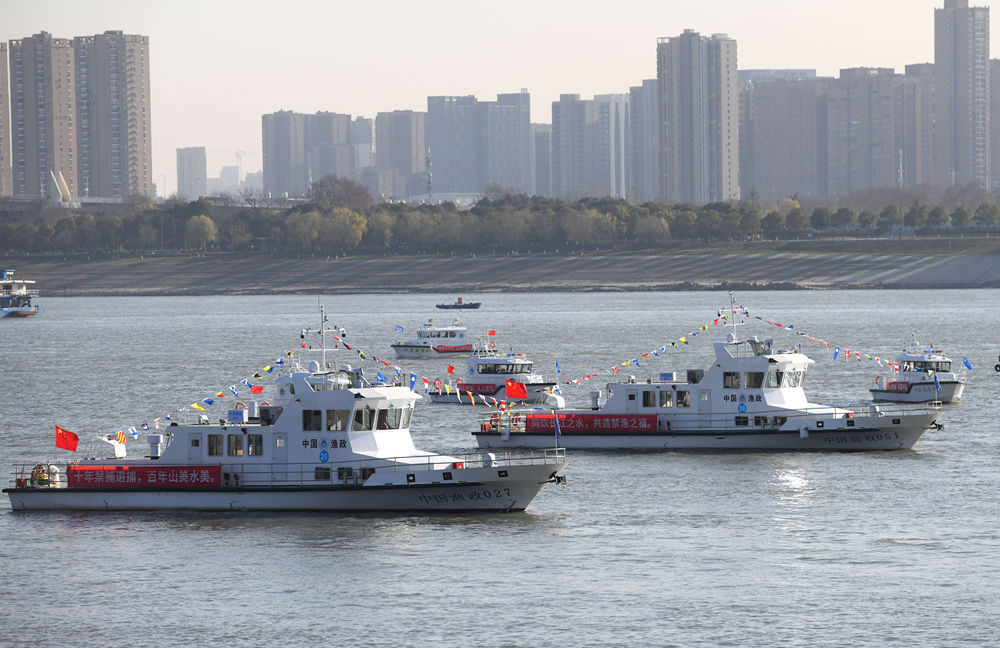
On December 31, 2020, at the launching ceremony of the "Ten-year Fishing Ban" in the key waters of the Yangtze River Basin, the fishery law enforcement fleet passed by the Wuhan section of the Yangtze River. Xinhua News Agency reporter Cheng Minshe
Slow adjustment and fine cultivation
The blue waves are boundless, and the wind is beautiful. An underwater forest with an area of 26,000 square meters attracts many tourists to watch in the demonstration area of Guo Zhenghu E Zui, Zihu, East Lake. I saw that under the sunlight, the lake was sparkling, the water plants in the lake were swaying, fish and shrimp were swimming among the water plants, and the underwater world was gorgeous.
Who would have thought that the blue line of the lake covers an area of 33.63 square kilometers, and the East Lake, which is known as the "largest lake in China", was once reduced to Class V to worse than Class V due to the rapid expansion of the city.
The environmental deterioration of East Lake has attracted great attention of Wuhan Municipal Party Committee and Municipal Government. Under the systematic planning, the East Lake will be treated with the same treatment of water and shore, and the water and shore, sewage and rainwater, and morphological ecology will be grasped at the same time.
Interception of sewage from the source, rainwater and sewage diversion in the rainwater catchment area of East Lake, and the transformation of mixed joints have been accelerated; To give way to sewage, Beihu sewage treatment plant, Dadonghu deep tunnel and other system projects are speeding up; Let the East Lake be "slowly cultivated", and the water ecological restoration has never stopped …
A series of measures have achieved initial results. From January to June 2020, the overall water quality of East Lake continued to maintain Class III, the best level in the past 40 years. In November of that year, Wuhan East Lake passed the national acceptance of the construction of national demonstration rivers and lakes, ranking among the first batch of demonstration rivers and lakes in China and becoming the only lake in the city.
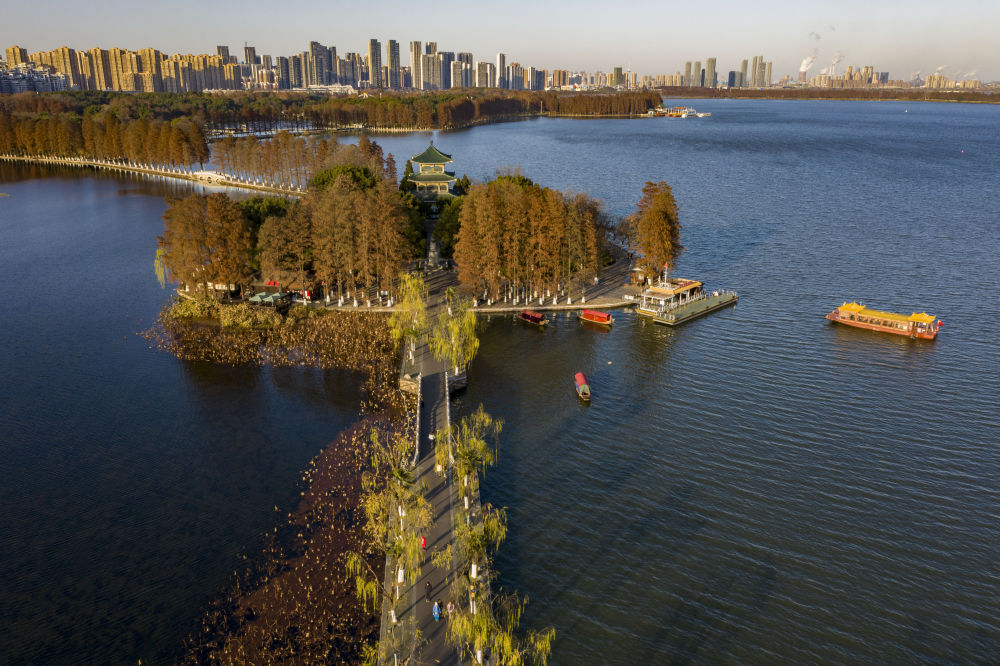
A corner of East Lake in Wuhan (photo taken on December 30, 2020). Xinhua News Agency reporter Du Huaju photo
Wuhan, with 166 lakes, has a lake surface area of 867 square kilometers, and 148 important lakes, such as East Lake and liangzi lake, have been listed in the Hubei Lake Protection List. "City of 100 Lakes" is not only the name of Wuhan, but also a unique and precious local resource.
In order to protect the ecological homeland, Wuhan has successively promulgated and implemented the Regulations on Lake Protection in Wuhan, the Detailed Rules for the Implementation of the Regulations on Lake Protection in Wuhan, the Measures for the Management of Lake Renovation in Wuhan and the Regulations on Water Resources Protection in Wuhan, which set a "rule" for strengthening lake protection. Adhere to the implementation of source management, systematic management and comprehensive management, and coordinate the internal sources from shore to shore, into the lake and out of the lake, and promote the transformation of the "single water body" governance model of lake governance to the "water-shore-land integration" system governance model.
Xu Zhaobiao, director of the Lake Division of Wuhan Water Affairs Bureau, said that Wuhan has also innovated to formulate an "identity card" for each lake to clarify the lake category. According to the plan, on the basis of mastering the lake area, the relevant departments have defined the blue line of lake water area, the green line around the lake and the gray line of building control around the lake. According to the distribution, water system, function and water quality of the lake, the lakes are divided into three types: urban storage type, rural type and ecological conservation type, and "one lake and one policy" is formulated to carry out scientific management.
Nanhu Lake, with a water area of 7.67 square kilometers, was once a negative case of "pollution first, then treatment" because of disorderly development.
According to the management mode of "one lake and one policy", Wuhan city carried out investigation along the South Lake, found out the current situation of 212 outlets, found out 193 mixed joints of pipe network, and comprehensively found out and formed a "one map" of river basin pipe network. At the same time, the "wall chart operation" is implemented in the way of objective assessment, project construction, weekly supervision, whole-process management and dynamic monitoring. Now, Nanhu has removed the "hat" of the inferior V class and reappeared the beautiful scenery of blue waves and birds.
According to Wuhan Water Resources Bulletin 2020 issued by Wuhan Water Affairs Bureau, in 2020, the area of lakes with water quality reaching or better than Class III in the city accounts for 42.7% of the total area of monitored lakes. Compared with 2019, the water quality of 62 lakes has improved and the water quality of 94 lakes has remained stable. After comprehensive measures, the number of inferior V lakes in the city has decreased from 30 in 2019 to 6 in 2020.
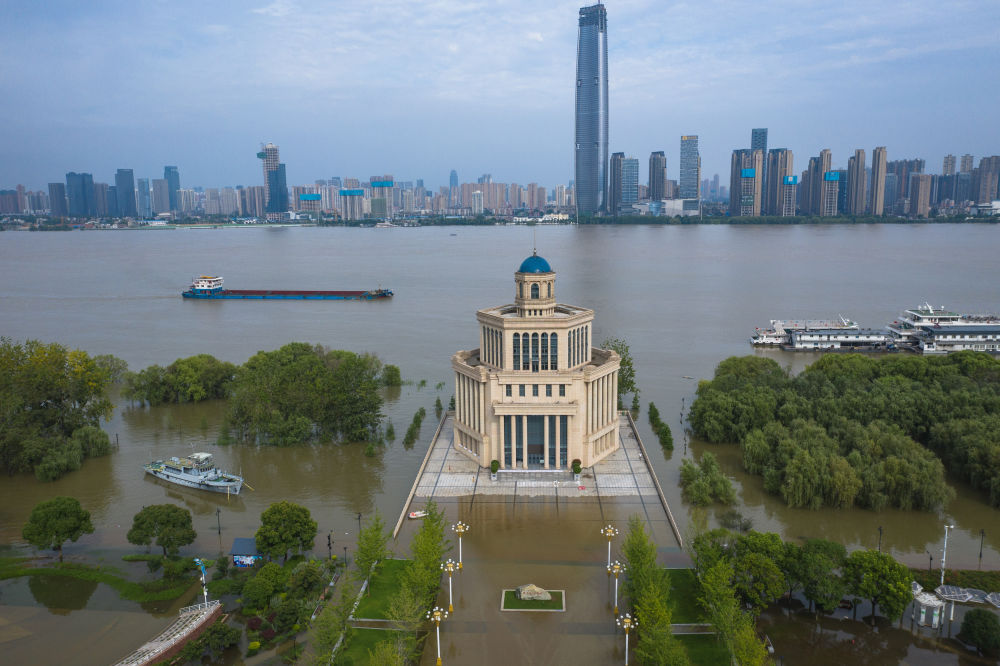
Hankou River Beach during the flood season (photo taken on July 13th, 2020). Xinhua News Agency reporter Xiao Yijiu photo
Everyone works hard.
"Everyone has an unshirkable responsibility to protect the rivers and lakes in Jiangcheng." On March 23, Qiu Tianci, a graduate student, came to compete to be the folk lake chief of Luhu Lake at the folk river and lake chief station in Hankou River Beach. Growing up on the Jinshui River, he has deep feelings for rivers and lakes. This time, he competed for the appointment of Luhu folk lake chief. He plans to form a propaganda group to love and protect rivers and lakes, and lead more students to join the team to publicize and protect rivers and lakes.
In Jiangcheng Wuhan, there are still many citizens like Qiu Tianci who volunteer to protect rivers and lakes.
Ma Yi is the president of Wuhan "Love My Hundred Lakes" Volunteers Association. Since 2010, he has led Wuhan "Love My Hundred Lakes" Volunteers Association to engage in voluntary activities to protect rivers and lakes.
Since 2015, the "Love My Hundred Lakes" Volunteers Association began to openly recruit folk lake chiefs in the city. In 2017, it collected folk lake chiefs for 166 lakes in the city. From 2018 to 2020, entrusted by the Office of the Leading Group for the Management of Rivers and Lakes (Municipal Water Affairs Bureau), "Love My Hundred Lakes" collected "folk river and lake chiefs" for municipal key rivers and lakes in Wuhan for three consecutive years, and was responsible for organizing voluntary river and lake patrol activities and third-party surveys.
Because of his outstanding contribution to the protection of rivers and lakes, in October 2020, Ma Li was awarded the title of "National Folk River and Lake Guardian" in the "Looking for the Most Beautiful River and Lake Guardian" activity sponsored by the Ministry of Water Resources, the All-China Federation of Trade Unions and the All-China Women’s Federation.
"With the association as the platform, the’ Love My Hundred Lakes’ team has explored a development path that effectively connects the government, enterprises and the public to participate in the management and protection of water environment, attracting the largest number of civil forces to join in." Yan Yuhong, head of the office of the director of the Wuhan Water Affairs Bureau, commented.
To protect the water environment, it is far from enough to rely solely on the power of the government, but also to involve private forces.
It is reported that since the implementation of the "three-long linkage" mechanism of official rivers and lakes, folk rivers and lakes and data rivers and lakes in Wuhan in 2018, folk rivers and lakes have become an important force for river and lake protection. In 2020 alone, the hired municipal-level folk river and lake chiefs visited rivers and lakes for more than 200 times, and more than 3,000 people actively participated, patrolling rivers and lakes for more than 5,000 kilometers, and timely discovered and effectively solved a series of problems in river and lake management and protection.
Protecting a city’s clear water requires everyone’s participation and is passed down from generation to generation.
"As a young pioneer, we keep in mind the responsibility of the red scarf and care for one side of clear lake with our own actions to benefit the happiness of a city." On March 24th, during the "China Water Week", all the students in Class 7 (8) of Qing Chuan Junior Middle School in Wuhan carried out labor education practice activities at the Lotus Lake. The students read out the proposal of ecological civilization, saying that they should strive to be the "small lake leader" who loves and protects the lake.
Yan Yuhong said that in order to give full play to the effectiveness of interactive management and protection of non-governmental rivers and lakes, the water department of Wuhan will adhere to the principle of "opening the door to control water", extensively employ social forces such as non-profit organizations, enterprises, schools, families and the masses as non-governmental rivers and lakes, expand social participation in river and lake management and protection, and build a supervision and participation system with non-governmental rivers and lakes as the main body.
A new chapter on keeping the rivers and lakes together and clearing the shore with water. Recently, the Ministry of Ecology and Environment released the monitoring data in 2020. Since the implementation of the Great Protection of the Yangtze River, the water quality of the Yangtze River leaving from Baihushan in Wuhan section of the Yangtze River has been maintained at Class II for two consecutive years, which is better than the Class III water quality required by the national assessment. This means that in recent years, the water quality of Wuhan section of the Yangtze River has been continuously improved, reaching the best level in 20 years.
One city clean water, two rivers gallery, and three towns exquisite. A beautiful picture of "rivers and lakes help each other, lakes and networks are connected, and people and water depend on each other" is slowly unfolding.
According to the plan, by 2035, Wuhan will realize a healthy pattern of rivers and lakes with An Lan, excellent supply and smooth drainage, river and lake cooperation and water network connection, and all the water ecosystems of rivers, lakes and reservoirs will be fully protected, basically realizing water modernization. (Reporter Tang Weibin, Liao Jun, Wang Zikai)
关于作者